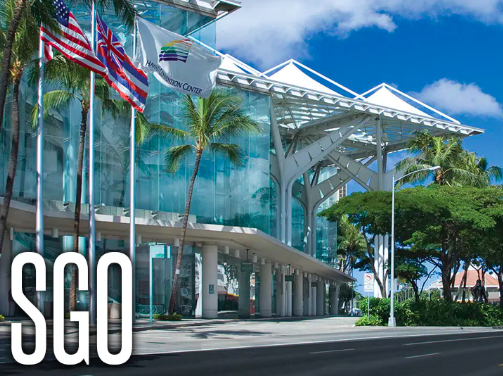By Christina Bennett, MS
Pembrolizumab in combination with bevacizumab and oral metronomic cyclophosphamide showed clinical activity in patients with recurrent epithelial ovarian cancer, according to the results of an open-label phase II trial (LBA4) presented at the 2019 Society of Gynecologic Oncology (SGO) 50th Annual Meeting on Women’s Cancer, held March 16–19 in Honolulu, Hawaii.
“With these epithelial ovarian cancers, once it’s recurred, we don’t have as many options,” Eloise Chapman-Davis, MD, a gynecologic oncologist at Weill Cornell Medicine and NewYork-Presbyterian, told Cancer Network. Given the need for more treatment options, she said that the clinical benefit seen with the pembrolizumab combination in this trial is “very interesting and exciting.”
The phase II trial (ClinicalTrials.gov identifier: NCT02853318) included a safety lead-in cohort of 5 patients and ultimately enrolled 40 women with recurrent epithelial ovarian, fallopian tube, or primary peritoneal cancer. All patients received pembrolizumab 200 mg in combination with bevacizumab 15 mg/kg every 3 weeks and oral cyclophosphamide 50 mg every day.
The scientific rationale behind this three-drug combination is that by using an anti-VEGF inhibitor, lymphocyte trafficking will become improved and dendritic cell function restored. With the addition of cyclophosphamide, the circulating regulatory T cells will become depleted while simultaneously restoring the cytotoxic potential of T cells and natural killer cells. Chapman-Davis commended this rationale, saying, “They are pretty much manipulating immune cells with Avastin [bevacizumab] plus cyclophosphamide as a way to help increase the efficacy of the Keytruda [pembrolizumab].”
She added, “Like all cancer treatment, it’s a better way to have personalized medicine instead of just putting drugs together that don’t necessarily benefit one another.”
The trial included patients who were platinum-sensitive (ie, platinum-free interval of 6 months or longer before recurrence) or platinum-resistant (ie, platinum-free interval of less than 6 months before recurrence). Patients on trial had a median age of 62 (range, 44–88 years) and received a median number of 5 prior lines of chemotherapy.
At a median follow-up of 14.7 months, the objective response rate was 37.5%, which included 15 patients who achieved a partial response. At the time of analysis, 12 patients were still receiving treatment, 7 of which had continued treatment for longer than 1 year.
The 6-month progression-free survival (PFS) rate was 70%, which included 15 patients who achieved a partial response and 13 who had stable disease. As would be expected, the 6-month PFS rate was higher for platinum-sensitive patients compared with platinum-resistant patients (100% vs 59%; P = .024).
“In the platinum-resistant population, the fact that they had such a high response rate is really good in patients that have been heavily pretreated,” said Chapman-Davis. She explained that the response rate typically seen in platinum-resistant patients is approximately 15% to 20%.
In terms of safety, decreased lymphocyte count and hypertension were the most commonly reported grade 3 adverse events. The study investigators described the combination as “well tolerated” in the study abstract.
Chapman-Davis agreed with the study investigators that the responses seen in this trial with the pembrolizumab combination were higher than what’s been seen for the combination of bevacizumab and oral cyclophosphamide. She said this pembrolizumab combination “should be explored in a larger phase III trial.”
This article was published by Cancer Network.


